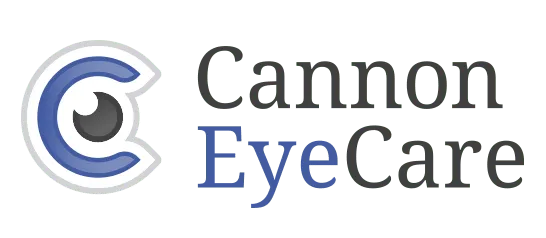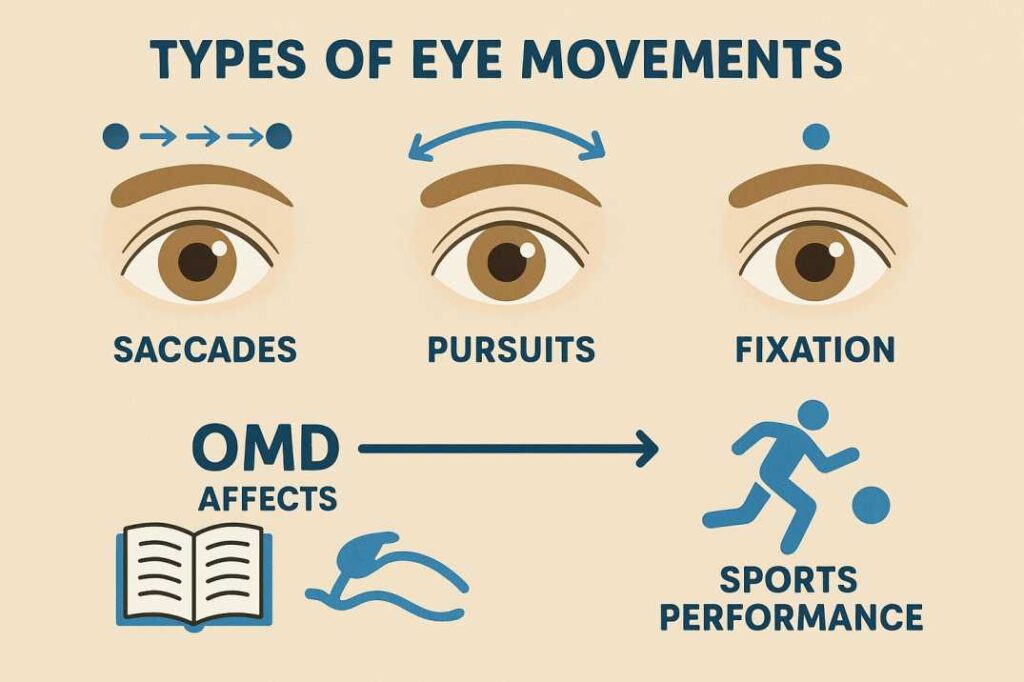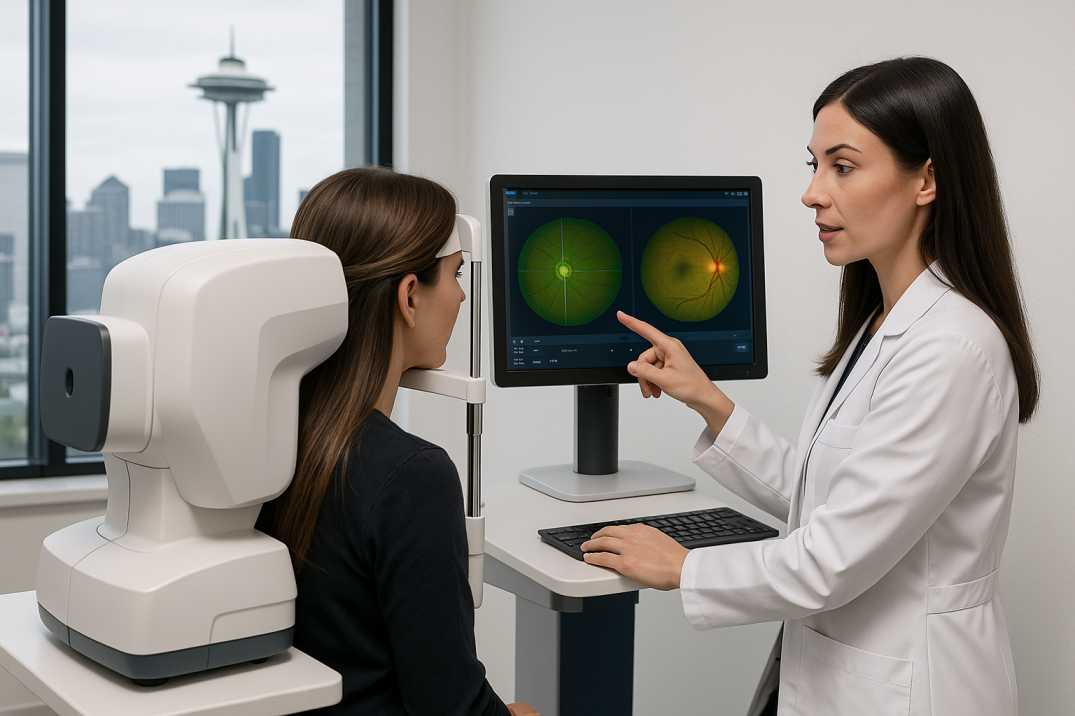Ocular Motor Dysfunction
Have you noticed your child struggling with reading despite having 20/20 vision? Or perhaps they complain of headaches after homework, lose their place frequently while reading, or seem to avoid close-up tasks altogether? You might be witnessing signs of ocular motor dysfunction (OMD), a condition affecting how the eyes move and work together that impacts thousands of Seattle families each year.
Unlike simple vision problems corrected with glasses, ocular motor dysfunction involves the brain’s ability to control precise eye movements. This neurological condition affects everything from reading comprehension to sports performance, yet it often goes undiagnosed because standard eye exams don’t always detect it.
At Cannon EyeCare in Seattle, we’ve helped over 500 families navigate OMD diagnosis and treatment since 2018. Recent research shows that targeted interventions can dramatically improve outcomes, but early identification remains crucial. This comprehensive guide will help you understand the warning signs, treatment options, and resources available right here in the Pacific Northwest.
What is Ocular Motor Dysfunction? Understanding the Basics
Ocular Motor Dysfunction (OMD) involves difficulty controlling the precise eye movements essential for reading, writing, and tracking objects. Unlike refractive errors (nearsightedness or farsightedness) that blur vision clarity, OMD disrupts how your eyes coordinate and move as a team.
Three Key Eye Movements Impacted by OMD
-
Saccadic Movements: Quick jumps between fixation points (like words while reading).
Poor control causes: Skipping words/lines, reduced reading comprehension. -
Pursuit Movements: Smooth tracking of moving objects (critical for sports or driving).
Deficits lead to: Difficulty following balls, moving vehicles, or visual targets. -
Fixation Stability: Maintaining steady focus on stationary objects (needed for reading detail).
Weakness results in: Letters appearing to move or blur, increased visual fatigue.
How OMD Differs from Other Vision Issues in Seattle Children
Many Seattle parents assume reading struggles mean their child needs glasses. OMD is fundamentally different:
-
Vision Clarity: Children often have perfect 20/20 sight despite reading difficulties.
-
Root Cause: OMD stems from impaired brain-eye coordination, not eye shape or lens focus.
-
Testing Needs: Requires specialized oculomotor assessments beyond standard eye charts.
Recent advances in eye-tracking technology, enhanced by machine learning, now detect subtle OMD patterns invisible to traditional methods, revolutionizing diagnosis.
Recognizing Ocular Motor Dysfunction Symptoms by Age
Elementary School Children (Ages 5-12) in Seattle
Approximately 15-20% of reading difficulties in Seattle schools stem from undiagnosed vision issues like OMD. Key signs include:
-
Reading Challenges:
-
Frequently losing place while reading
-
Needing fingers to track words
-
Words appearing to “jump” or “move” on the page
-
Trouble copying from classroom boards
-
Reading comprehension lagging despite strong phonics skills
-
-
Behavioral Cues:
-
Avoiding homework/reading
-
Excessive head tilting during close work
-
Covering one eye or frequent eye rubbing
-
Short attention span for visual tasks
-
-
Academic Impact:
-
Poor handwriting spacing
-
Struggles with math columns or word problems
-
Ball-tracking difficulties in sports
-
Rapid fatigue during reading
-
Symptoms in Teenagers & Adults
-
Academic/Work Issues:
-
Declining grades despite effort
-
Digital eye strain during computer use
-
Driving difficulties (night/traffic)
-
Headaches or double vision after visual tasks
-
-
Post-Injury Red Flags:
-
65% of mild TBI patients develop OMD. Seattle’s active lifestyle leads Cannon EyeCare to treat many cases of:
✓ Sports concussions
✓ Motor vehicle accidents
✓ Workplace injuries
-
Urgent Symptoms – Seek Immediate Care at Cannon EyeCare
Contact our Seattle clinic promptly if experiencing:
-
Sudden double vision or peripheral vision loss
-
Severe headaches with visual changes
-
Eye movement problems after head trauma
-
Dramatic unexplained decline in reading ability
Understanding Ocular Motor Dysfunction: Causes & Risk Factors
Developmental Causes in Seattle Children
-
Genetic Factors: ≈40% higher risk with a family history of learning disabilities or vision disorders.
-
Premature Birth: Increased OMD prevalence in children born before 37 weeks due to underdeveloped visual systems.
-
Environmental Triggers:
-
Excessive screen time during critical development
-
Limited outdoor play impacts visual-motor skills
-
Maternal/early childhood nutritional deficits
-
Acquired Causes in Seattle Teens & Adults
-
Traumatic Brain Injury (TBI): Leading cause of adult-onset OMD. Common Seattle scenarios:
✓ Sports concussions (skiing, soccer, football)
✓ Motor vehicle accidents on I-5 or Seattle highways
✓ Maritime/construction workplace injuries -
Neurological Links: Recent studies confirm strong OMD associations with:
-
Multiple sclerosis (higher PNW prevalence)
-
Parkinson’s disease
-
Post-stroke recovery
-
Brain tumors affecting vision pathways
-
-
Co-Occurring Conditions: Often diagnosed alongside at Cannon EyeCare:
-
Autism spectrum disorders (30-40% overlap)
-
ADHD and attention deficits
-
Learning disabilities
-
Comprehensive OMD Diagnosis at Cannon EyeCare in Seattle
Initial Assessment: Your First Visit
At our Seattle clinic, we conduct thorough 90–120 minute evaluations using advanced diagnostic technology to pinpoint ocular motor dysfunction. Expect:
-
Detailed History Review:
-
Academic/work performance patterns
-
Family history of vision disorders
-
Previous head injuries or neurological conditions
-
Daily symptom impact analysis
-
-
Specialized Testing:
✓ Saccadic Assessment: Measures speed/accuracy of eye jumps between targets
✓ Pursuit Tracking: Evaluates smooth following of moving objects
✓ Fixation Stability: Tests steady gaze maintenance during tasks
Advanced Diagnostic Technology
Cannon EyeCare utilizes cutting-edge eye-tracking systems that:
-
Capture 1000+ eye movement samples per second
-
Detect subtle abnormalities invisible to standard exams
-
Establish precise baselines for treatment progress
-
Generate detailed reports for insurance documentation
Understanding Your Results
We explain findings in clear terms:
-
Normal: Age-appropriate eye movement accuracy/speed
-
Mild OMD: Slight delays causing visual fatigue
-
Moderate OMD: Clear deficits affecting daily activities
-
Severe OMD: Significant impairment requiring intensive therapy
Treatment Options: Evidence-Based OMD Care at Cannon EyeCare
Vision Therapy: The Gold Standard
Cannon EyeCare’s research-backed 12-week vision therapy program achieves >85% success rates for qualified OMD patients. Our structured approach includes:
-
In-Office Sessions: 45-min appointments, 2x/week
-
Home Exercises: Daily 15–20 min practice
-
Progress Tracking: Bi-weekly objective assessments
-
Real-World Integration: Functional skill application
Why Seattle Families Choose Our Program:
✓ Protocols personalized to diagnostic results
✓ Collaboration with Seattle schools and healthcare teams
✓ Family education + insurance navigation support
Alternative Treatment Approaches
Based on recent clinical studies:
-
Vestibular Rehabilitation (effective in 19% of cases):
-
Ideal for post-concussion OMD
-
Combines balance/eye-movement training
-
Offered via Cannon EyeCare’s Seattle Sports Medicine partnership
-
-
Optical Interventions (6% of studies):
-
Prism glasses for specific deficits
-
Light-sensitive tinted lenses
-
Computer screen optimization
-
-
Watchful Waiting (46% of mild cases):
-
Supervised monitoring for young children
-
Targeted activities to support natural improvement (occurs in ~30% of cases)
-
Integrative Approaches
Combined methods used by Seattle patients:
-
Occupational Therapy: Addresses sensory challenges
-
Educational Support: IEP/504 plan development
-
Nutritional Guidance: Underlying health optimization
-
Anxiety Management: Reduces stress around visual tasks
Insurance & Financial Options for OMD Treatment in WA
Navigating Washington State Insurance
Coverage for OMD care varies across WA insurers. Cannon EyeCare’s specialist helps Seattle families maximize benefits:
-
Typically Covered:
-
Initial diagnostic evaluation (medical exam)
-
Progress-monitoring follow-ups
-
Post-injury OMD treatment
-
-
Often Limited/Excluded:
-
Vision therapy sessions (“experimental” per some plans)
-
Home training equipment
-
Supplemental testing
-
Successful Insurance Appeal Strategies
Our Seattle team has overturned 200+ denials using:
-
Medical Necessity Proof:
-
Physician reports linking OMD to functional impairments
-
Teacher impact statements
-
Objective test results
-
-
Research-Based Appeals:
-
Peer-reviewed efficacy studies
-
Long-term cost-benefit data
-
-
Alternative Funding:
✓ HSA/FSA eligibility
✓ Payment plans
✓ Seattle vision foundation grants
Transparent Pricing at Cannon EyeCare
-
Initial Evaluation: $450–650 (often insurance-covered)
-
12-Week Vision Therapy: $3,200–4,800
-
Progress Sessions: $200–300
-
Home Equipment: $150–400
Living with Ocular Motor Dysfunction: Practical Seattle Strategies
Educational Accommodations
Seattle Public Schools and neighboring districts support OMD students through:
-
Classroom Modifications:
✓ Preferential seating near teaching boards
✓ Extended time for reading tasks
✓ Alternative written work formats
✓ Scheduled visual breaks -
Technology Supports:
-
Text-to-speech software
-
Large-print materials
-
Computer-based assignments
-
Visual tracking apps (e.g., Cannon EyeCare’s recommended tools)
-
Home Environment Optimization
-
Reading Setup:
-
60W LED lighting (left-shoulder positioned)
-
16–20 inch viewing distance
-
20° book tilt using stands
-
20-20-20 rule: Break every 20 mins (look 20 ft away for 20 sec)
-
-
Study Space Essentials:
-
Minimal visual distractions
-
Solid-colored work surfaces
-
Screens at arm’s length (top at eye level)
-
Workplace Adaptations for Seattle Professionals
Tailored solutions for tech/office environments:
-
Computer Ergonomics:
-
Monitors 20–26 inches from the eyes
-
Screen brightness matches ambient light
-
Anti-glare filters
-
Mandatory vision breaks
-
-
Task Management:
-
Chunking large visual projects
-
Voice-to-text software
-
Digital document requests (PDF > hard copies)
-
Flexible work arrangements
-
When to Seek OMD Help in Seattle: Cannon EyeCare’s Guidance
Seek Immediate Consultation If You Notice:
- Reading skills lag significantly behind grade level
- Persistent headaches during/after visual tasks
- Frequent eye rubbing, squinting, or avoidance of reading
- Complaints of “moving text” or double vision
Post-Injury Evaluation Timeline
After any head injury, schedule OMD screening within 2–4 weeks—even with mild symptoms. Seattle’s active lifestyle increases risks:
-
Winter sports accidents (skiing, snowboarding)
-
Bicycle/moped incidents on city streets
-
Maritime or construction workplace injuries
Preventive Screening Recommended For:
-
Children with a family history of learning disorders
-
Students entering Seattle kindergarten/middle school
-
Tech professionals with screen fatigue
-
Unexplained visual exhaustion in adults
Actionable OMD Management Tips from Cannon EyeCare
For Seattle Parents:
- Symptom Tracking: Maintain a 2-week log of reading behaviors/complaints
- School Collaboration: Request teacher observations of classroom visual challenges
- Screen Management: Follow AAP guidelines (≤1 hr/day ages 2-5; monitored use for older)
- Outdoor Prioritization: Daily natural light exposure supports visual development
- Preventive Care: Annual comprehensive exams + OMD screening after age 5
For Seattle Adults:
- Ergonomic Investment: Optimize workstation lighting/monitor positioning
- Visual Breaks: Practice the 20-20-20 rule religiously during screen work
- Targeted Exercise: Enhance neurological health through regular activity
- Stress Reduction: Mitigate symptom flares through anxiety management
- Sleep Optimization: Prioritize 7-9 hours for visual system recovery
Ocular Motor Dysfunction may not blur vision like typical eye problems, but its impact on reading, learning, and daily performance can be life-changing if left undiagnosed. The good news is that with early detection and targeted therapy, children and adults in Seattle can dramatically improve their visual skills and quality of life.
If you’ve noticed signs such as skipped words, headaches after reading, or visual fatigue in yourself or your child, don’t wait. Schedule a comprehensive ocular motor assessment at Cannon EyeCare in Seattle today. Our expert team has helped hundreds of families find answers, relief, and lasting solutions—and we’re here to do the same for you.
Take the first step toward clearer, more comfortable vision—book your OMD evaluation with Cannon EyeCare now.
FAQs
-
Ocular motor dysfunction causes poor eye movement control, making reading hard by causing skipping, loss of place, and eye strain.




